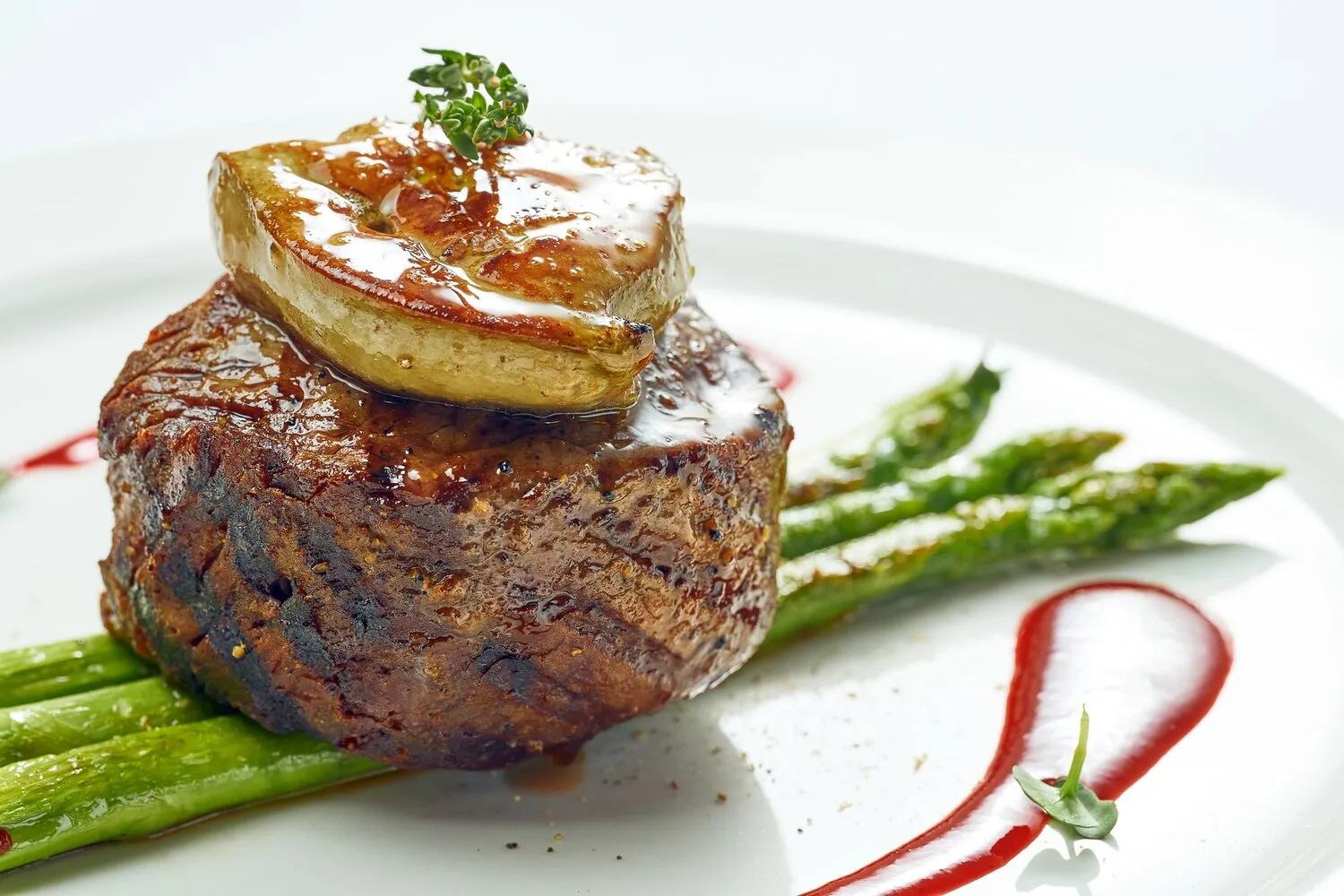
Dry-Aged Steaks
Dorsia is known for its selection of dry-aged steaks.
Nutrition Facts
* The % Daily Value (DV) tells you how much a nutrient in a serving of food contributes to a daily diet. 2,000 calories a day is used for general nutrition advice.
Dry-aging is a technique rooted in pre-refrigeration meat preservation, where carcasses were hung in cool, dry environments to prevent spoilage while enhancing flavor. While the precise origins are difficult to pinpoint, the practice has been employed for centuries wherever meat needed to be stored for longer durations, especially in colder climates. Modern dry-aging, particularly in high-end restaurants like Dorsia, represents a revival and refinement of this traditional method, utilizing controlled environments to maximize flavor development and tenderness.
Dry-aged steak has become a symbol of culinary luxury and sophistication, frequently associated with high-end dining experiences and meticulous craftsmanship. It represents a commitment to quality ingredients and traditional techniques.
Status Symbol
In modern dining culture, ordering a dry-aged steak often signifies a willingness to indulge in premium, expertly prepared food, reflecting a certain level of affluence and discerning taste.
Culinary Appreciation
The consumption of dry-aged steak involves an appreciation for the science and art of meat aging, showcasing the restaurant's expertise and the customer's knowledge of fine dining.
Masculinity and Power
Historically, large cuts of meat, especially beef, have been associated with masculinity and power. Dry-aged steak, being a premium version of this, often reinforces this association in social settings.
Dry-aged steaks boast a concentrated, beefy flavor profile that is often described as nutty, buttery, and almost cheese-like. The process intensifies the inherent umami notes of the meat.
The primary flavor components arise from enzymatic breakdown during the aging process. Enzymes break down proteins and fats, creating amino acids, peptides, and fatty acids that contribute to the complex and savory taste. The drying process also concentrates the meat's natural sugars, adding a subtle sweetness. The 'funk' or slight blue-cheese aroma sometimes associated with dry-aged beef comes from specific microbial activity on the surface of the meat, though this is carefully controlled to ensure safety and optimal flavor development. At Dorsia, one might expect to find nuanced differences based on the cut (e.g., ribeye, porterhouse, strip steak) and the length of aging.
Selecting the Right Cut
Consider the cut's fat content. Ribeyes generally have more marbling, leading to a richer flavor, while a New York strip offers a firmer texture and leaner profile. At Dorsia, inquire about the specific aging time for each cut as this will significantly impact the final flavor.
Proper Cooking Technique
Dry-aged steaks benefit from high-heat searing to develop a deep crust. Reverse searing (cooking at a low temperature followed by a high-heat sear) is also effective in ensuring even cooking and a flavorful exterior. The internal temperature is key – medium-rare to medium is often recommended to preserve the steak's tenderness and flavor.
Minimal Seasoning
Due to the intense flavor of dry-aged beef, minimal seasoning is typically preferred. Salt and pepper are often sufficient to enhance the natural taste. Over-seasoning can mask the complex flavors developed during the aging process.
Resting the Steak
Allow the steak to rest for at least 10 minutes after cooking. This allows the juices to redistribute throughout the meat, resulting in a more tender and flavorful bite. Tenting the steak with foil helps retain heat without steaming it.
Explore additional Steakhouse dishes and restaurants
Explore SteakhouseDiscover top dining spots and culinary experiences in Milwaukee.
Explore MilwaukeeLearn more about the food culture, restaurant scene, and culinary heritage of United States.
Explore United States